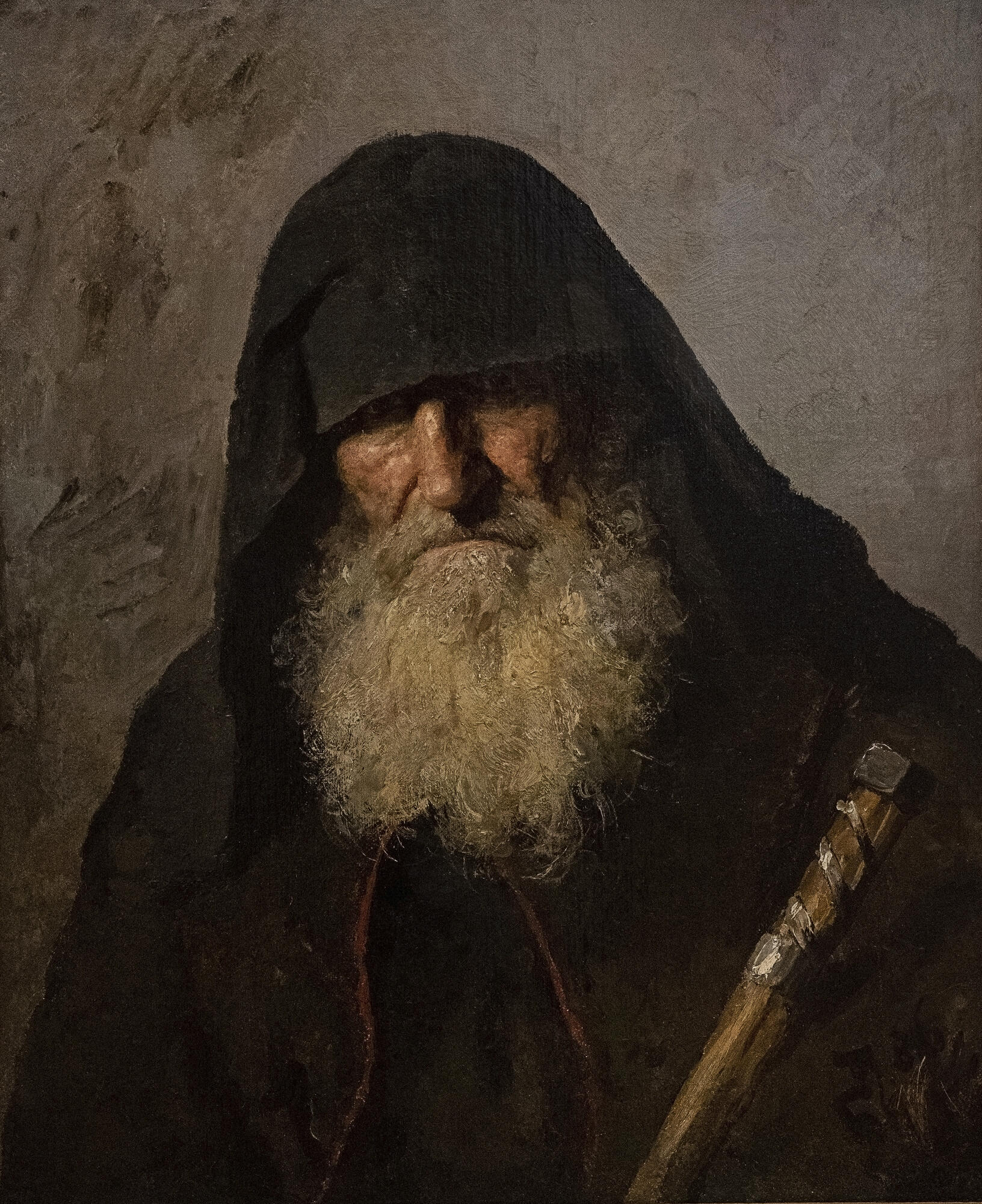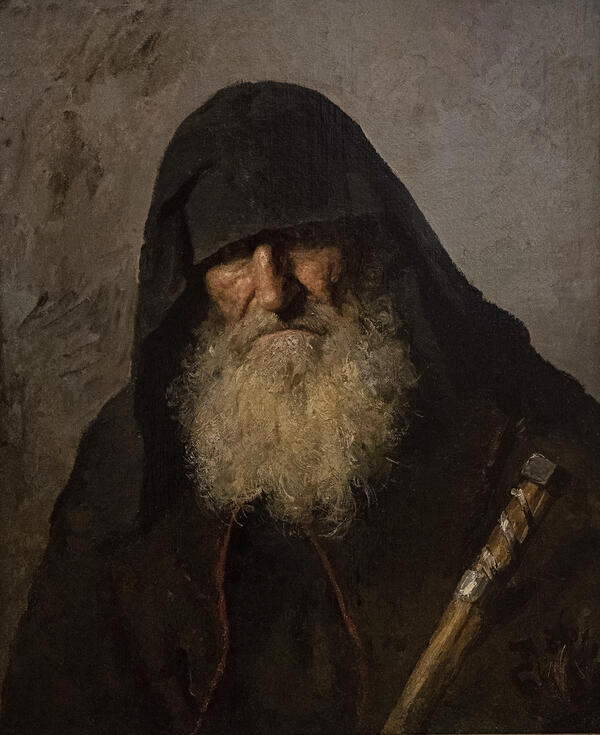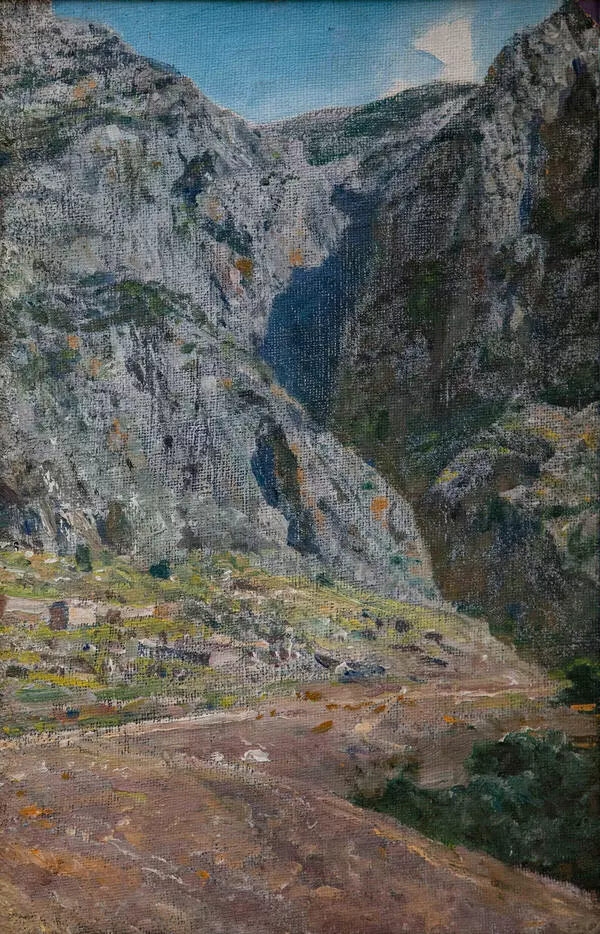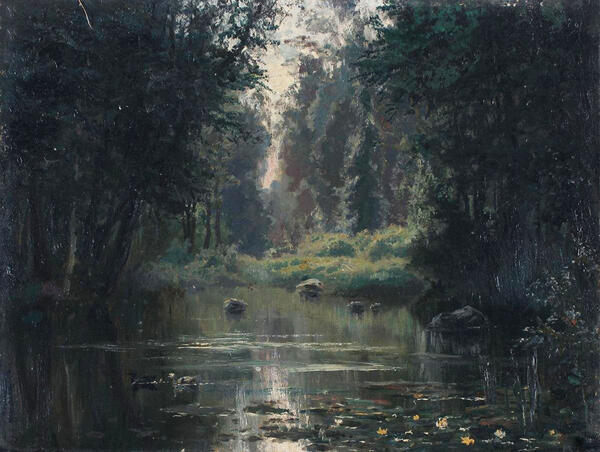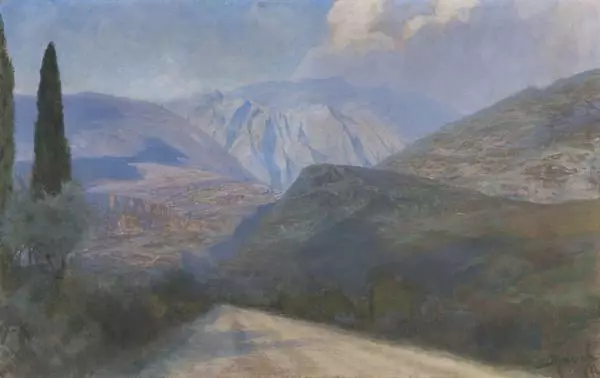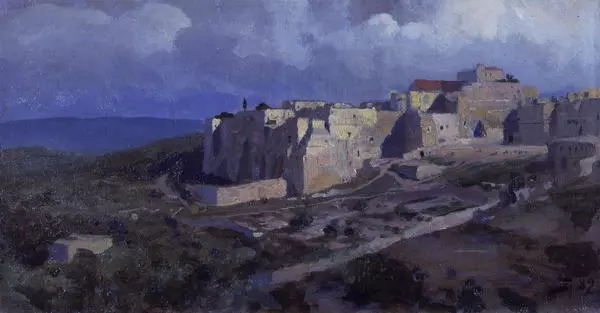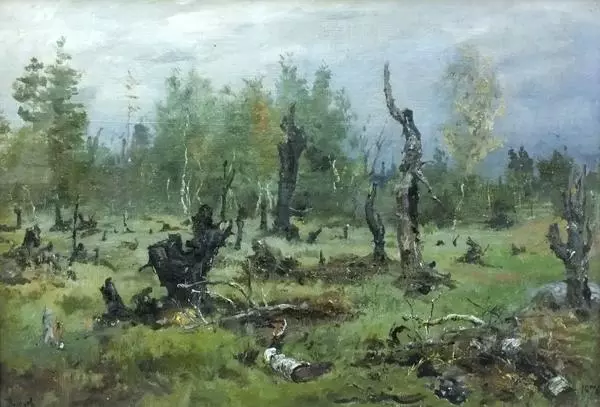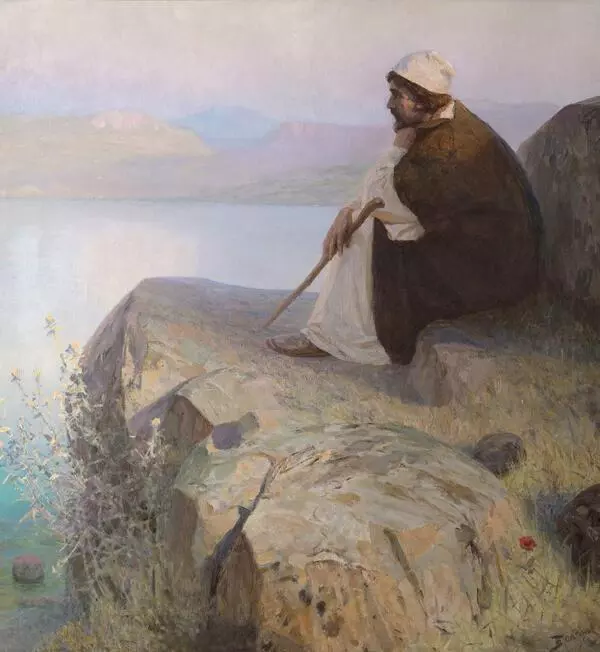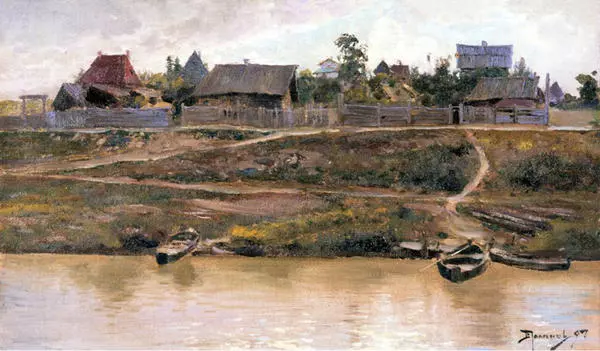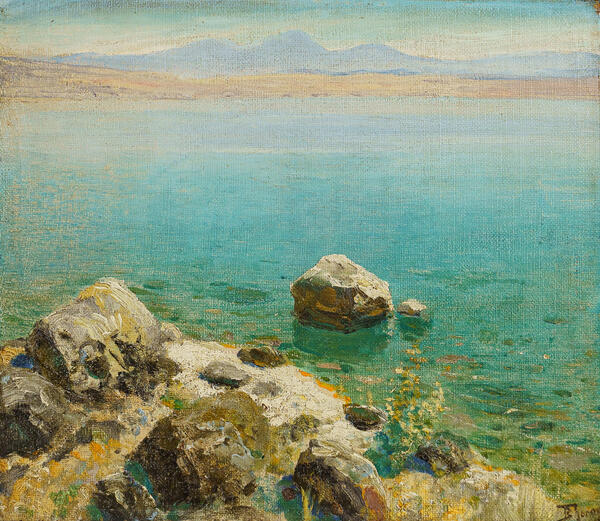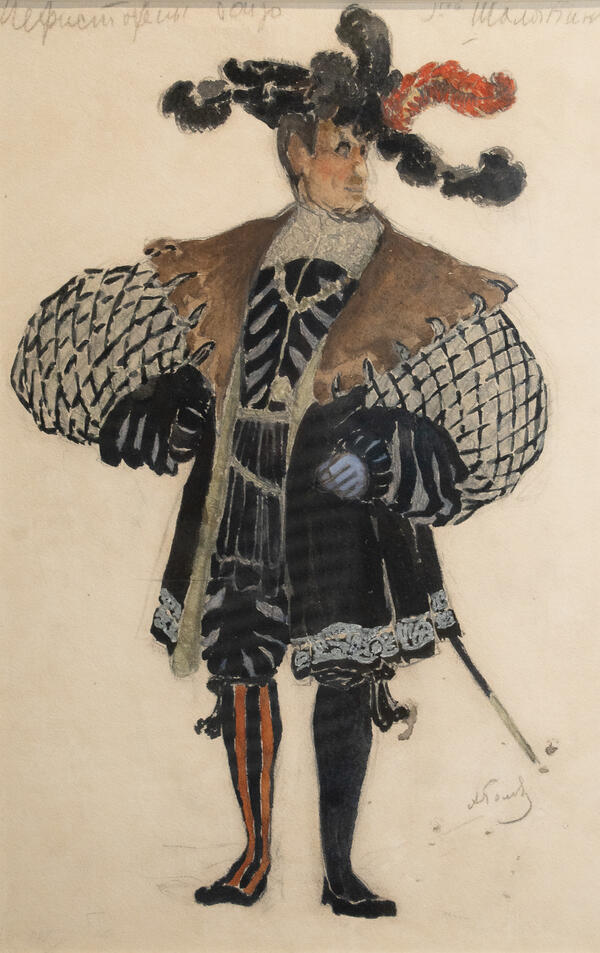Vasily Polenov was born in 1844 in St. Petersburg, into a large noble family. He became interested in painting as a child, so in 1863, while studying at the Faculty of Physics and Mathematics, he attended the Academy of Arts as a non-matriculated student.
After graduating from the Academy with the Great gold medal, Polenov traveled around Europe, visited art galleries and museums, studied different schools and styles of painting. The artist was searching for his direction for a long time: he painted portraits and landscapes, rendered historical and mythological plots. In his later years, he became celebrated as a landscape painter and master of genre painting. The painting ‘Moscow Courtyard’ made Polenov the founder of ‘intimate painting’, and Emperor Alexander III acquired his canvas ‘Christ and the Sinner’ for the royal collection.
In 1872, Polenov went abroad as a pensioner (scholarship’s owner) of the Academy of Arts. He visited Vienna, Munich, Venice, stayed in Paris for a long time and painted a number of paintings there, including “The Arrest of the Countess d’Etremont”, which earned him the academician title.
During the painting process, Polenov sought to immerse himself in the atmosphere and context of what he depicted. Thus, when painting “Christ and the Sinner”, the artist traveled to Palestine, Egypt, Turkey, Greece and other countries to soak the local atmosphere and to see with his own eyes the local sun, the descendants of the people who witnessed the meeting of Jesus and the apostles.
In 1885, Pavel Tretyakov bought the studies, which the artist brought from his trip, at an exhibition of the Wanderers. In addition to the studies, Polenov also exhibited the costumes of his Moscow models.
“Palestinian Monk” resulted from one of these studies from nature. To create the image, Polenov used a minimum of painting techniques. The artist’s attention is concentrated on the monk’s face, especially on the intense gaze from under the black hood. The model holds a staff stick — an attribute of wandering life.
The image of a monk is deliberately laconic. Polenov chose a restrained palette and stayed within the black and white range. At the same time, the gray background, the black clothes, the white color of the monk’s beard are heterogeneous, combining many shades. These techniques make the face in the portrait look alive.
After graduating from the Academy with the Great gold medal, Polenov traveled around Europe, visited art galleries and museums, studied different schools and styles of painting. The artist was searching for his direction for a long time: he painted portraits and landscapes, rendered historical and mythological plots. In his later years, he became celebrated as a landscape painter and master of genre painting. The painting ‘Moscow Courtyard’ made Polenov the founder of ‘intimate painting’, and Emperor Alexander III acquired his canvas ‘Christ and the Sinner’ for the royal collection.
In 1872, Polenov went abroad as a pensioner (scholarship’s owner) of the Academy of Arts. He visited Vienna, Munich, Venice, stayed in Paris for a long time and painted a number of paintings there, including “The Arrest of the Countess d’Etremont”, which earned him the academician title.
During the painting process, Polenov sought to immerse himself in the atmosphere and context of what he depicted. Thus, when painting “Christ and the Sinner”, the artist traveled to Palestine, Egypt, Turkey, Greece and other countries to soak the local atmosphere and to see with his own eyes the local sun, the descendants of the people who witnessed the meeting of Jesus and the apostles.
In 1885, Pavel Tretyakov bought the studies, which the artist brought from his trip, at an exhibition of the Wanderers. In addition to the studies, Polenov also exhibited the costumes of his Moscow models.
“Palestinian Monk” resulted from one of these studies from nature. To create the image, Polenov used a minimum of painting techniques. The artist’s attention is concentrated on the monk’s face, especially on the intense gaze from under the black hood. The model holds a staff stick — an attribute of wandering life.
The image of a monk is deliberately laconic. Polenov chose a restrained palette and stayed within the black and white range. At the same time, the gray background, the black clothes, the white color of the monk’s beard are heterogeneous, combining many shades. These techniques make the face in the portrait look alive.
